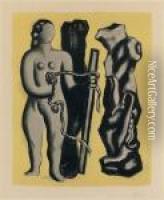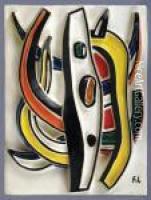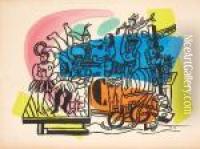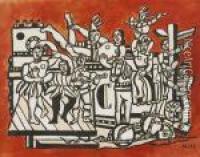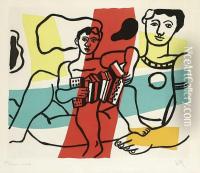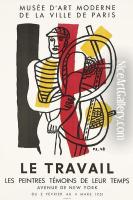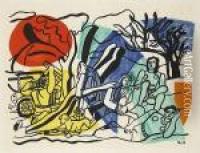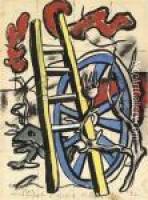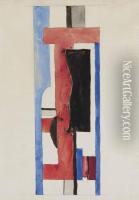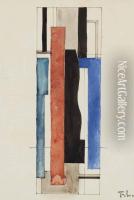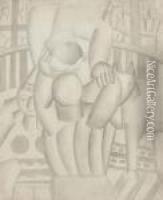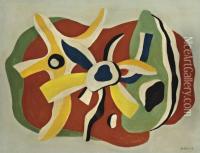Fernand Leger Paintings
Fernand Léger was a prominent French painter, sculptor, and filmmaker, born on February 4, 1881, in Argentan, Normandy. He initially trained as an architect before moving to Paris in 1900, where he eventually took up painting. Léger's early works were influenced by Impressionism, but he soon embraced a more avant-garde style after being inspired by the modernity of the Parisian cityscape and the works of artists like Paul Cézanne.
In the 1910s, Léger became associated with Cubism, though his approach was distinctively his own. He developed a form of 'Tubism,' characterized by machine-like, cylindrical forms and a bold, graphic use of color. His work during this period reflects his fascination with the mechanical world and the beauty he found in its abstraction. He served in the French army during World War I, an experience that intensified his interest in the common man and the role of technology in society.
After the war, Léger's work continued to evolve, and he became increasingly interested in the intersection of art and life. He wanted his art to be accessible to everyone and embraced a variety of media. His murals, large-scale paintings, and collaborations with architects embodied his belief in the social function of art. He also ventured into film, collaborating on the experimental film 'Ballet Mécanique,' which has become a seminal work of early avant-garde cinema.
In the 1930s, Léger's style became more figurative and his themes more overtly political, reflecting his commitment to leftist ideals and the human condition. During World War II, he lived in the United States, where he taught at Yale University and found inspiration in the American industrial landscape, which informed his later works.
Léger returned to France after the war and continued to work prolifically until his death on August 17, 1955, in Gif-sur-Yvette. His late work includes large, brightly colored canvases that celebrate modern life and the interconnectedness of man and machine. Léger's legacy is that of an artist who sought to make art that was reflective of the contemporary world and who played a significant role in the development of modernism in the 20th century.
